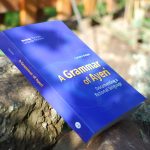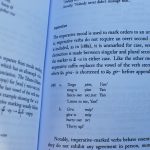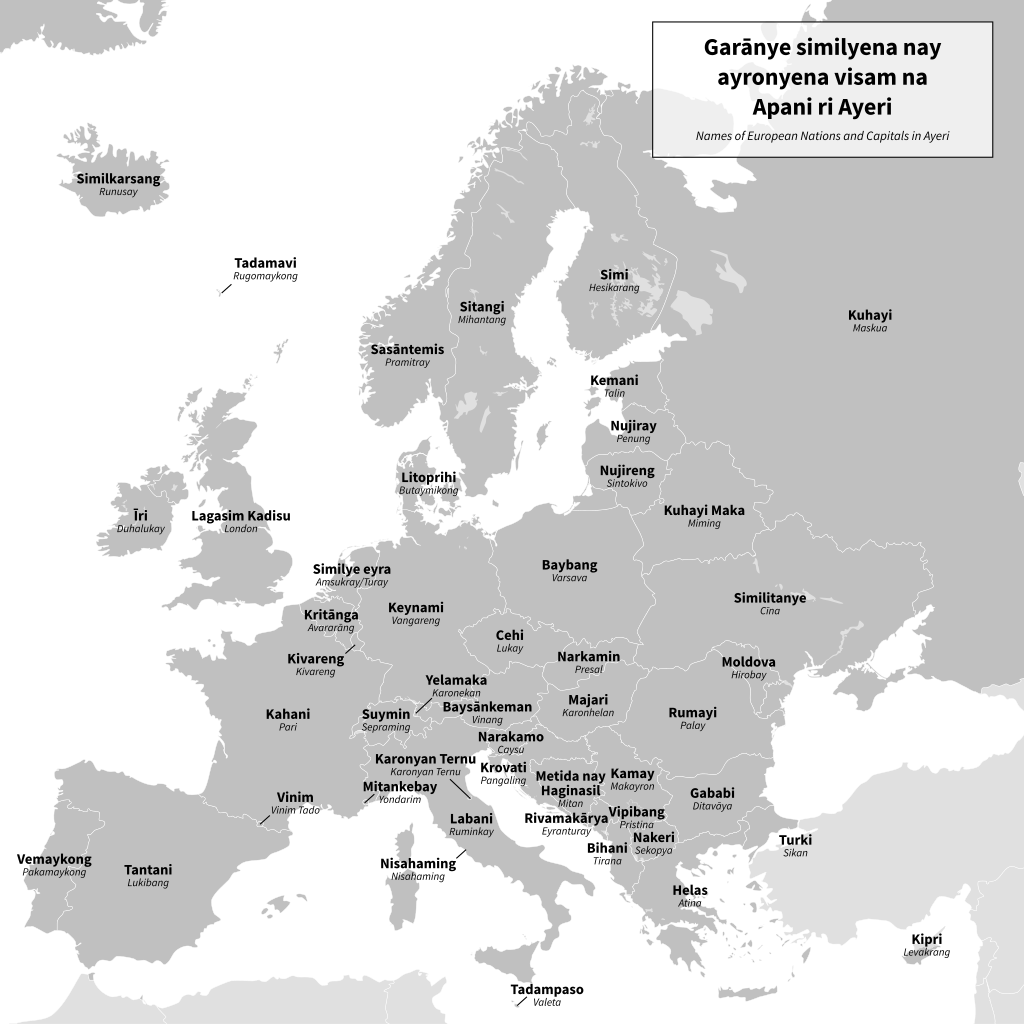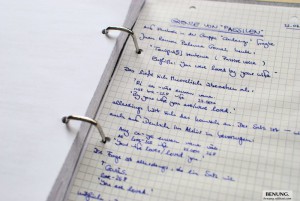- A Grammar of Ayeri is available from Amazon now, too, so I am assuming you can now indeed order print copies through the regular book trade as well as straight from Lulu.com.
🤓❤️📘
If you’ve visited the Grammar page or the Grammar project’s GitHub page recently, you will have noticed that I finally decided to publish a version 1.0 of A Grammar of Ayeri on October 1st. While this is a big step forward that took me some courage, I didn’t announce it in a big way, because I have reason to make a somewhat bigger announcement still today.
That is, I’m excited to announce that you can now also buy print copies of the grammar! Moreover, this happens to be in time for Ayeri’s 15th birthday in December—something I only noticed the other day. A few people have suggested making print copies available on demand in recent months, so you can now order my Ayeri grammar as a real and full-fledged book from Lulu.com. Since I decided to give the book an ISBN (978-0-359-09583-4), it should also become available to booksellers of your choice sometime in the next 4–6 weeks. Here’s what the beauty looks like:
The digital version of the grammar will remain available free of charge and with fully disclosed sources, that is, I explicitly intended this as Open Access.
A Grammar of Ayeri provides an overview of the language’s phonemic inventory and an analysis of its phonotactics, an in-depth description of its writing system, as well as a detailed description of its morphology and morphosyntax. Interstitial chapters try to shed a light on Ayeri from a typological perspective, both regarding morphology and syntax. I incorporated a number of blog articles from recent years, so if you’ve been following my blog, you know what to expect. All discussions contain fully-glossed examples for illustration, especially to help with the more technical parts.
Even though I worked on this book for a little more than two years, there are some topics I mention in the grammar without elaborating on them. Since there is always more to do, I had to draw a line somewhere. Topics left for future consideration will thus probably result in blog articles again sooner or later, so stay tuned. A list of errata may likewise follow.
Besides having been asked for print copies, I’ve been asked why I chose to self-publish, and the main reason is that I don’t really see straightaway which kind of publisher I might want to offer the manuscript of this book to, elaborate as it may be.
For one, it does not fit established paradigms of either fiction or non-fiction publishing. The book’s subject is essentially a work of fiction, yet it’s not narrative, but a piece of formal documentation of a conceived abstract object: a made-up language. Moreover, as I see it, conlangs are up to the whims of their creators (at least while they’re alive) and are thus entirely arbitrary when it comes to documenting and analyzing the diversity of human language from the perspective of linguistics—unless, for instance, you do a study on conlanging as a social phenomenon, study and compare the way individual conlangs are made and what that says about their creators, or utilize them as a didactic tool to teach linguistics. In my opinion, the immediate value of a grammar of a personal artistic language to linguistic epistemology is debatable. Lastly, due to the book’s presentation as a scholarly text, it will only appeal to a small readership, which is not exactly profitable. But mainly, I think, the difficulty is in being this weird hybrid of fiction and non-fiction, or fiction in the guise of non-fiction.
Maybe I’m being overly pessimistic with this assessment. Maybe the very aspect of being fiction in the guise of non-fiction might be a selling point in the future (but again: to what kind of publisher?), provided I could still keep my work online because “selling out” is the last thing I want to do. So far at least, no comparable effort has been professionally published to my knowledge, and there exist a few works with a similar scope as mine that I’m aware of, for instance, Étienne Poisson’s Siwa grammar, Martin Posthumus’ Novegradian grammar, and Matt Pearson’s Okuna grammar.











 I’ve been reworking my font of Tahano Hikamu since February now and also drew a hinyan version (“Tahano Hikamu Java”) completely from scratch. When I felt like toying around with these things again a couple of weeks ago, I started making the files functional with
I’ve been reworking my font of Tahano Hikamu since February now and also drew a hinyan version (“Tahano Hikamu Java”) completely from scratch. When I felt like toying around with these things again a couple of weeks ago, I started making the files functional with